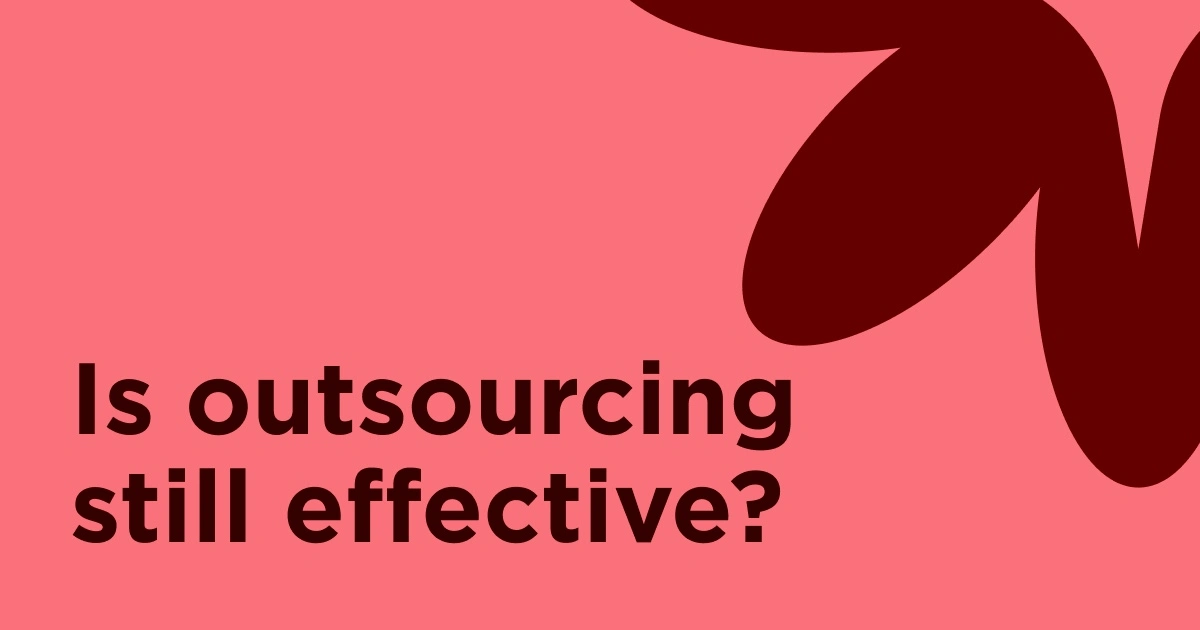Outsourcing has long been a go-to strategy for companies looking to scale quickly, reduce costs, and focus on core competencies. But in 2025, with advancements in automation, AI, and remote work, many are asking: Is outsourcing still effective?
The short answer is yes, but with important nuances. In this article, we’ll explore how outsourcing has evolved, where it thrives, and when it might not be the best option. We’ll also share real-world examples and expert insights that show outsourcing isn’t just surviving—it’s adapting and thriving.
A Quick Recap: What Is Outsourcing?
Outsourcing is the business practice of hiring a third-party service provider to perform tasks that could be done internally. These could include anything from customer support and software development to finance, HR, and marketing.
According to a report by Deloitte, 59% of businesses outsource primarily to cut costs, while others cite reasons like access to specialized talent, scalability, and faster project execution Deloitte 2023 Global Outsourcing Survey].
Why Outsourcing Still Works in 2025
1. Access to Global Talent Pools
In today’s talent-scarce environment, finding experienced specialists in your home market is harder than ever. Outsourcing lets you tap into global talent—whether it’s developers in Ukraine, design experts in the Philippines, or back-office teams in India.
Platforms like Clutch Outsourcing Providers make it easier than ever to vet and connect with trusted outsourcing partners across various industries.
2. Cost Efficiency Still Matters
Even with AI and automation reducing costs in some areas, outsourcing remains a financially smart choice. Why hire a full-time in-house team (with overhead, benefits, and training costs) when you can get the same job done at a fraction of the price?
Example: A U.S.-based startup needing round-the-clock customer support can outsource this function to a partner in Eastern Europe or Asia, saving up to 60% on operational expenses.
3. Flexibility in Uncertain Times
The pandemic taught businesses a powerful lesson: Agility is key. Outsourcing allows companies to scale teams up or down without going through the complexities of hiring or layoffs.
This flexibility is especially useful for project-based work or when entering new markets. For example, SaaS companies often outsource their QA and testing teams to stay nimble during beta testing phases.
4. Focus on Core Business Goals
When your team is swamped with admin tasks or processes outside their expertise, growth slows down. Outsourcing clears the deck so your internal teams can focus on strategic goals like innovation, R&D, and market expansion.
According to a study by Statista, IT and software development continue to be the most outsourced services globally, allowing companies to stay competitive without overstretching internal teams [Statista: Outsourcing Trends 2025].
Where Outsourcing Is Thriving Today
✅ IT and Software Development
This sector has seen explosive growth in outsourced partnerships. Startups and enterprises alike use outsourcing for everything from building MVPs to full-scale product development.
For instance, GitHub’s annual report highlights how distributed software teams (many through outsourcing models) are contributing to faster product launches and innovation.
✅ Customer Support
With cloud call centers and AI-driven support platforms, outsourcing your customer service has never been easier or more efficient. Outsourced teams can offer 24/7 support across time zones and languages.
✅ Finance and Accounting
Many small and mid-sized businesses outsource bookkeeping, payroll, and even CFO-level strategy to reduce costs and improve accuracy.
✅ Marketing and Creative Services
Content creation, SEO, PPC, and graphic design are commonly outsourced by both startups and large enterprises. This allows internal teams to focus on strategy while specialists handle execution.
When Outsourcing Doesn’t Work Well
Despite its many advantages, outsourcing isn’t a universal solution. It’s important to know when not to outsource.
❌ Highly Confidential Work
If the task involves trade secrets, sensitive user data, or regulatory compliance (like HIPAA or GDPR), outsourcing may pose security and legal risks—unless handled by a highly specialized and vetted provider.
❌ Tasks Requiring Deep Context
Some roles demand daily collaboration, instant decision-making, and cultural alignment. In such cases, outsourcing might create friction or slow down processes.
❌ Lack of Oversight
Poor communication and unclear expectations are major pitfalls. If not managed properly, outsourcing can lead to delays, subpar results, and frustration. That’s why choosing the right partner—and maintaining active communication—is critical.
Modern Models: From BPO to Hybrid Teams
The outsourcing industry isn’t what it used to be. Traditional BPO (Business Process Outsourcing) is being replaced by more dynamic models, like:
Outstaffing: Where dedicated talent becomes part of your team but remains on the outsourcing provider’s payroll.
Managed Teams: Entire departments are handled by the outsourcing partner, often with performance metrics and SLAs.
Project-Based Engagements: Ideal for startups that need quick development cycles without long-term commitments.
These modern models combine the flexibility of outsourcing with the control of in-house teams.
How to Get the Most Out of Outsourcing in 2025

If you’re thinking of outsourcing or optimizing your current vendor relationships, keep these best practices in mind:
Start with clear goals: Define what you’re outsourcing and why.
Choose the right partner: Look for experience, client reviews, and industry fit.
Set communication routines: Use tools like Slack, Asana, or Jira to stay in sync.
Protect your IP: Sign NDAs and use secure collaboration platforms.
Measure results: Set KPIs and review them regularly.
What Experts Are Saying
According to Gartner, by 2025, 70% of enterprises will use outsourcing for digital transformation initiatives, driven by the need for speed, agility, and innovation. Gartner: Future of Outsourcing.
Industry leaders agree that outsourcing isn’t fading—it’s just shifting. The future lies in smart outsourcing, where strategic partnerships replace transactional vendor relationships.
Final Thoughts: Is Outsourcing Still Effective?
Absolutely—when done right. Outsourcing in 2025 is more strategic, flexible, and innovative than ever before. Whether you’re scaling fast, entering a new market, or building tech products, outsourcing offers a proven path to results without stretching your internal team thin.
It’s not about cutting corners. It’s about building smarter, faster, and with the right people—wherever they are in the world.
Need Help with Outsourcing? Yoocollab Has You Covered
At Yoocollab, we help businesses grow with flexible, high-performing teams through outstaffing and outsourcing services tailored to your needs. Whether you’re a startup or an enterprise, we connect you with pre-vetted tech experts who feel like an extension of your team.
Let’s scale smarter—together.
Contact us today to get started.




